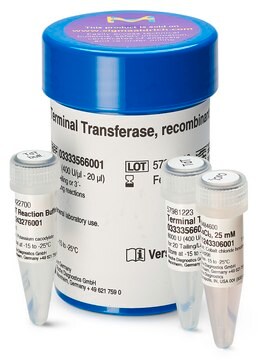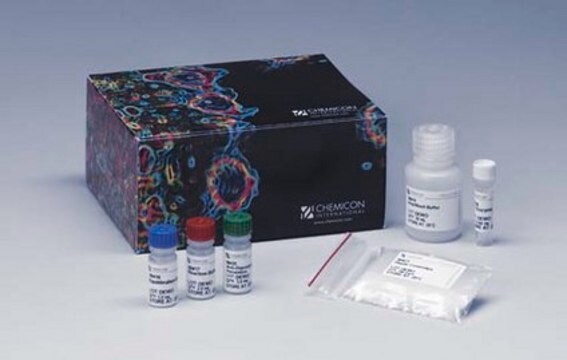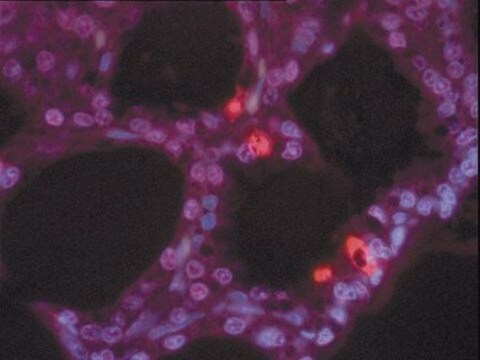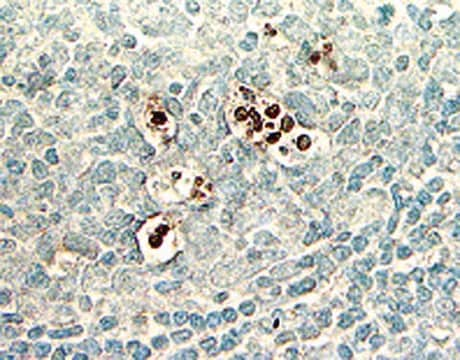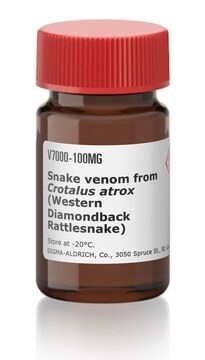S7107
ApopTag TdT Enzyme
ApopTag Terminal deoxynucleotidyl Transferase (TdT) is a recombinant enzyme intended for use in labeling the 3′-OH ends of fragmented DNA during apoptotic cell detection.
Sinónimos:
TdT enzyme, Terminal deoxynucleotidyl transferase
About This Item
Productos recomendados
Descripción general
ApopTag is a registered trademark of Serologicals Company.
Aplicación
Each vial contains 300 μl of ApopTag Terminal Transferase (TdT) Enzyme.
Instructions for Use
Prepare labeling mixture as follows:
77 μl ApopTag Reaction Buffer (S7105 or kit component # 02)
33 μl ApopTag TdT Enzyme
Mix well and keep on ice. This reagent may be prepared in advance and stored on ice for no more than 6 hours. The Reaction Buffer - TdT Enzyme mixture is ready for use at the "APPLY WORKING STRENGTH TdT ENZYME" step in The Complete ApopTag Manual.
Warnings and Precautions :
ApopTag Terminal Transferase (TdT) Enzyme contains potassium cacodylate (dimethylarsinic acid) as a buffer. This material is harmful if swallowed; avoid contact with skin and eyes (wear gloves, glasses); wash areas of contact immediately.
Envase
Almacenamiento y estabilidad
Información legal
Cláusula de descargo de responsabilidad
Palabra de señalización
Danger
Frases de peligro
Consejos de prudencia
Clasificaciones de peligro
Aquatic Chronic 2 - Carc. 1B
Código de clase de almacenamiento
6.1C - Combustible acute toxic Cat.3 / toxic compounds or compounds which causing chronic effects
Clase de riesgo para el agua (WGK)
WGK 3
Listados normativos
Los listados normativos se proporcionan para los productos químicos principalmente. Para los productos no químicos sólo se puede proporcionar información limitada. Si no hay ninguna entrada, significa que ninguno de los componentes está en la lista. Es obligación del usuario garantizar el uso seguro y legal del producto.
EU REACH Annex XVII (Restriction List)
Certificados de análisis (COA)
Busque Certificados de análisis (COA) introduciendo el número de lote del producto. Los números de lote se encuentran en la etiqueta del producto después de las palabras «Lot» o «Batch»
¿Ya tiene este producto?
Encuentre la documentación para los productos que ha comprado recientemente en la Biblioteca de documentos.
Los clientes también vieron
Nuestro equipo de científicos tiene experiencia en todas las áreas de investigación: Ciencias de la vida, Ciencia de los materiales, Síntesis química, Cromatografía, Analítica y muchas otras.
Póngase en contacto con el Servicio técnico